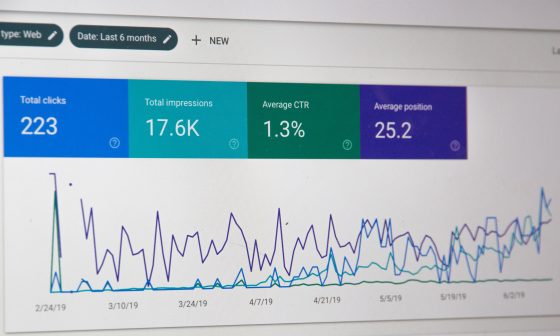A fierce competition for your customers’ attention is happening in their inboxes.
Email is an incredibly rewarding marketing tool, making it the go-to channel for all types of agencies. Your potential clients receive hundreds of emails daily. So, you can’t send out the same, stale email formats and content. Still, creating fresh and varied email campaigns that rise above noise and clutter is tricky even for creative marketers and agency owners.
That’s why we’re sharing six email marketing campaign examples to include in your email marketing strategy and inspire your next high-performing campaign. These examples go beyond selling and connect with existing and potential customers on a personal level.
6 Superb Email Marketing Campaign Examples to Grow Your Agency
Just because someone’s interested in your brand or service doesn’t mean they’re ready to buy. Email marketing helps you stay top-of-mind with informative and engaging content.
Successful email campaigns nurture customer relationships to achieve business goals and growth. What does that entail? Creating a newsletter with attention-grabbing email subject lines, compelling email content, personalization, and clear calls to action (CTA).
The email marketing campaign examples below illustrate how you can use email to grow your agency.
1. For Engagement
Client engagement refers to how email subscribers interact with your marketing messages. It indicates how effectively you capture their attention and generate a response. High engagement means clients value your emails. Low engagement means audiences are ignoring or marking emails as spam.
Engagement emails are all about driving customer action through opens, clicks, replies, and forwards. You need eye-catching subject lines, compelling email content, visible CTAs, and personalization strategies to deliver the desired results.
E-commerce businesses enjoy high levels of engagement due to transactional emails, like order confirmations and shipping notifications. Agencies must find other ways to generate engagement. These typically include interactive elements (polls, quizzes), client reviews or feedback, personalized product recommendations, and sometimes, abandoned cart email reminders.
Check this out:

This Action Rocket weekly email leverages the word game, Wordle, to get subscribers to interact with the email. Email recipients guess the word to receive a reward.
Why it works:
According to research by Dispatch.io, 60% of email recipients are more likely to engage with interactive emails. Moreover, over 50% want to interact with content inside their email. This engagement email uses game mechanics to create a unique customer experience.
2. For Promotion
Promotional emails inform subscribers about your products or services and incentivize action (visiting a website, registering for an event, or making a purchase) with special offers, discount codes, and exclusive rewards. The goal is to accelerate the conversion process and build loyalty.
Holidays are great fodder for limited-time promotional campaigns.

This business-building agency builds its holiday promotion around the 12 Days of Christmas.
Why it works:
Seasonal promotions leverage specific occasions to introduce and market certain products or services. But you’re not limited to official holidays like Christmas or the Fourth of July. There are tons of unofficial holidays throughout the year that you can create campaigns around. You just need to find one that’s relevant to your brand.
For instance, National Cookie Day presents a unique marketing opportunity for digital security firms.
3. For Newsletters
Email newsletters are a great way to educate customers about your services and establish brand authority. Newsletters can cover:
- Company announcements
- Industry news and trends
- Product tutorials
- Expert insights
The goal isn’t to sell, but to nurture and build relationships with subscribers.

Barrel’s newsletter shares a roundup of valuable content to help subscribers get the most out of their engagement and sales services.
Why it works:
Rather than sending separate emails, bundling content into a single communication minimizes email clutter and avoids overwhelming subscribers with too many emails.
The newsletter highlights and drives traffic to blog posts, increasing online visibility. The combination of text, images, and CTAs makes it easy for subscribers to find and engage with relevant content.
4. For New Launch
New launch emails announce upcoming products, services, or features. The goal is to create buzz ahead of the official release. There are several ways you can do this:
- Product preview emails build anticipation with demos of how the product works.
- Pre-order emails allow users to purchase the product before the official launch.
- Product release emails provide details on the official release.
- Feature announcement emails educate subscribers about new functionality and benefits.
New product or service launch campaigns are generally long and consist of more than one email. So, you can create email sequences with the different types of launch emails. Here’s a nice example.

This email from Blush, a design agency, announces the release of a new illustrative design for Pro subscribers.
Why it works:
Product launch email campaigns are multi-functional. In addition to announcing new products, you can re-engage clients, upsell product packages, and show clients you listen to feedback, especially if the new feature was requested.
5. For Customer Delight
Retaining clients is key to long-term growth. One way to do that is with customer delight emails. These go beyond clients’ expectations and seek to evoke pleasure when interacting with your brand.
Examples of customer delight emails are thank you emails, brand anniversary emails, and end-of-year wrap-ups.
Here’s an email marketing example from Teachable you can adopt for your agency.

Users get $10 off their next purchase for helping the platform grow and achieve 10 years of business.
Why it works:
Emails celebrating milestones are a pleasant surprise for customers, especially when they include incentives such as special discounts, free product upgrades, and exclusive content. They show users you appreciate them by acknowledging their birthdays and years of loyalty.
You can also highlight brand or individual client achievements to show subscribers the value your agency provides.
6. For Re-Engagement
Re-engagement emails allow you to reconnect specifically with clients who have lost interest in your emails. The goal is to win back these subscribers by reminding them of your value and generating missed revenue.
That can include sending incentives such as discounts, free upgrades, or exclusive offers, surveys to learn what content they prefer, and highlighting interesting product updates.

This email marketing campaign seeks to re-engage inactive subscribers by asking them to update their email preferences.
Why it works:
Customers don’t interact with your emails for various reasons: they are irrelevant, too many, or in the spam folder. Allowing users to update their email preferences empowers them to choose the number and type of emails they receive. If they no longer want to receive marketing emails, unsubscribing removes them from your email lists. That improves performance metrics and email deliverability.
Tips to Sharpen Your Email Marketing Campaign
Successful marketing campaigns don’t just happen. You need effective strategies and best practices to stand out in crowded inboxes.
Here are tips to ensure your emails are opened and read.
-
Have clear goals
Defining your goals (i.e., why you’re sending emails) is key to marketing success. It guides who you should target and the type of content to share.
For instance, you would include customer testimonials if your goal is sales generation. Social proof is a great way to get prospective clients to commit because it shows them that other people value your brand’s offering.
Other marketing goals include product awareness, brand authority, lead generation, web traffic, and customer retention, to name a few.
-
Fine-tune your audience and messaging
All successful email marketing campaigns showcase a clear understanding of the customer base, i.e., their preferences, motivations, and expectations. Customers vary along demographic, geographic, and psychographic lines.
Audience segmentation and personalization enable you to deliver the right message to the right people at the right time. So, a generic email blast about a new premium feature will be irrelevant to disengaged customers or users on basic plans. You need separate emails for these audiences.
Fortunately, you don’t have to create new content from scratch for each segment. An AI article rewriter allows you to repurpose existing blog content into concise, scannable email copy for the different audience segments.
-
Create a time-bound campaign and schedule
Timing matters in marketing. If you send emails infrequently, subscribers will forget about you. If you send emails too often, you risk becoming a nuisance.
You don’t want to overwhelm, underwhelm, or frustrate subscribers. Instead, you want to establish a consistent sending frequency to keep clients engaged and your brand top of mind.
Your cadence will depend on the type of campaign you’re sending. For example, a timely promotional email ensures clients take advantage of offers, while a nurturing campaign, spaced out over six weeks, builds trust with audiences and establishes brand authority.
Whatever frequency you choose (daily, monthly, or quarterly), send emails on the same day and time. For instance, monthly newsletters should go out every third Friday of the month at 2:00 pm. That way, subscribers come to expect your messages.
-
Don’t forget A/B testing
It’s one thing to think you have created a high-converting email campaign; it’s another to know it for a fact.
A/B testing allows you to pinpoint which elements of your live campaign drive conversions. It compares two versions of the same email to see which resonates with target audiences.
For example, you could split-test subject lines (one with emojis, one without) or CTAs (above or below the digital fold) to establish which formulations clients best respond to. Test each email element in this way. You’ll learn the best time to send emails, which content resonates, the layout audiences prefer, and more.
-
Track metrics and make improvements
Today’s perfect email marketing campaign may not be the same tomorrow, as market trends and customer behavior change. Worse still, you can do everything right and not know why your campaign isn’t delivering the results you expect.
Tracking key performance indicators helps you identify and fix problems.
- Open rates measure how many people open your emails.
- Click-through rates measure how many people click your email CTA.
- Unsubscribe rates measure how many opt out of your subscriber list.
- Bounce rates measure how many emails return as undelivered.
If your open rates are high but click-through rates are low, your subject lines are effective, but the CTA buttons and content aren’t. High bounce rates signal problems with your email lists, such as invalid addresses, and unsubscribes signal that your content isn’t relevant.
Conclusion
The key to email marketing success is using various formats and strategies to engage and retain customers. Exploring various effective email marketing campaign examples can help expand your agency’s business.
This article shared six types of email marketing campaigns to add to your marketing arsenal: engagement, promotional, nurturing, product launch, retention, and re-engagement emails. What comes next? Executing your campaigns.
Email marketing software makes creating and sending targeted and personalized emails easy. Look for tools with marketing automation, segmentation, and comprehensive analytics.
Author bio: Meet Michal Leszczynski, Head of Content Marketing and Partnerships at GetResponse. With 10+ years of experience, Michal is a seasoned expert in all things online marketing. He’s a prolific writer, skilled webinar host, and engaging public speaker. Outside of business hours, Michal shares his wealth of knowledge as an Email Marketing lecturer at Kozminski University in Warsaw.


